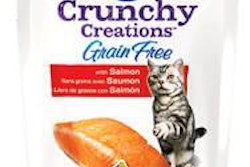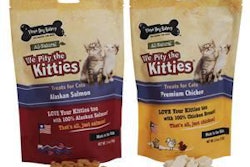["The body’s response to blood sugar following a meal is very important.", "Food form, composition and production processes are known to alter the glycemic index."]
The concept of a product possessing a "low glycemic index" is emerging as a new parameter for evaluating petfoods. The index is a carryover from the human foods industry, where it is used as a method to help diabetic individuals make ingredient and meal choices in their effort to constantly monitor and control blood glucose levels.
Because of its simplicity and the link between glucose metabolism and a host of chronic diseases, such as obesity, the glycemic index has also become more widely recognized as a dietary management tool for the broader population. So, it is no wonder that the idea has found its way into petfood promotions and requests for low-glycemic ingredients and products. However, given this notion that the glycemic index has migrated over from the human foods and nutrition industry, one must question, is it a valid concept for evaluating a petfood?
Glycemic index was first described by Jenkins et al. in 1981 and has been explored in great depth over the past 30-plus years. In short, their work was intended to simplify the "carbohydrate exchange" values for diabetics. It did this by comparing the response of an individual to a 50-gram carbohydrate challenge meal following an overnight fast and expressing the results relative to the person's response to a 50-gram glucose challenge.
Thus, in practice, following the fast, the subject consumes the challenge meal, blood samples are collected in 15- to 30-minute increments for two hours by simple finger prick tests and blood glucose is measured by standard methods. The blood glucose values are then plotted over time and the "area under the glucose curve" computed. Then the area under the curve of the test carbohydrate is expressed as a proportion of the area from the glucose challenge.
Ordinarily, interpreting glucose and insulin responses can be quite complicated; but this method boils it down to a single value for each ingredient and uses the same glucose reference for all samples. Glucose would have a value of 100, and the test carbohydrates would be something lower than 100. It is generally accepted under this premise that a "low glycemic index" would be below the mid-50s and a "high glycemic index" would be above. There is also evidence that the glycemic index of a multi-ingredient food could be estimated from the individual ingredient data.
Why should we care? The body's response to blood sugar following a meal is very important. It sets in motion an entire cascade of metabolic events, some of which may negatively influence long-term health. Specifically, a high glycemic index has been identified as a marker to a number of health issues in humans, such as diabetes, obesity, cardiovascular disease and cancer.
In pets and other animals (rats and mice), there are indications that avoiding high-glycemic foods might also be beneficial for managing diabetes. This seems quite logical. There may also be a link, albeit not yet a direct one, between the glycemic index and obesity, performance and other degenerative diseases associated with aging in the pet. However, there does not appear to be any direct relationship proposed in the literature to suggest a benefit for managing the dietary glycemic index in normally healthy dogs or cats.
Currently, there are complete reference tables of glycemic index values for human foods. It is not really clear whether these data are applicable to other species. Only one recent paper exploring glycemic index in dogs has been published in the readily available literature. In this work, Adolphe et al. (2012) evaluated the glycemic index of four starch sources in dogs. Their methods deviated slightly from the parameters described for humans regarding the dose of carbohydrate and duration of testing, but the general premise was consistent with commonly accepted practices. They reported the glycemic index for rice, barley, corn and peas as 55, 51, 47 and 29, respectively. This compares to 64, 25, 69 and 22, respectively, for these ingredients fed to human test subjects, as summarized in a review paper by Foster-Powell et al. (2002).
So, with a very small sample size, there are some data that seem to agree and some that do not. This would indicate that additional work is needed for the dog. No data were found for glycemic index values using the cat as a subject. Since the machinery to manage glucose operates with much different thresholds in the cat, it almost goes without saying data are needed for this species before any inference is made to a glycemic index.
Not only is there scant data using pets in the evaluation, but also food form, composition and production processes are known to alter the glycemic index. For example, the glycemic index can differ depending on the content of soluble sugars, type of starch (e.g., amylose or amylopectin), content of resistant starch, gelatinization or cook of the starch, presence of gelling agents, soluble fiber content and particle size of the meal, to name just a few.
This notion of selecting ingredients to use in petfoods based on their glycemic index is quite intriguing and certainly appeals to the notion of having some elegant rating system to promote products. However, we don't have much direct information regarding its interpretation in pet diets, and using data from human food studies doesn't appear to be very reliable for the dog and is unknown for the cat. The technique can be applied to mixed meals but is really targeted to evaluating starches. Plus, there does not seem to be a great deal of evidence suggesting any relevance for the benefit of a normal healthy pet. So for now, it appears to be an interesting research technique rather than a tool to support product design or claims.


















